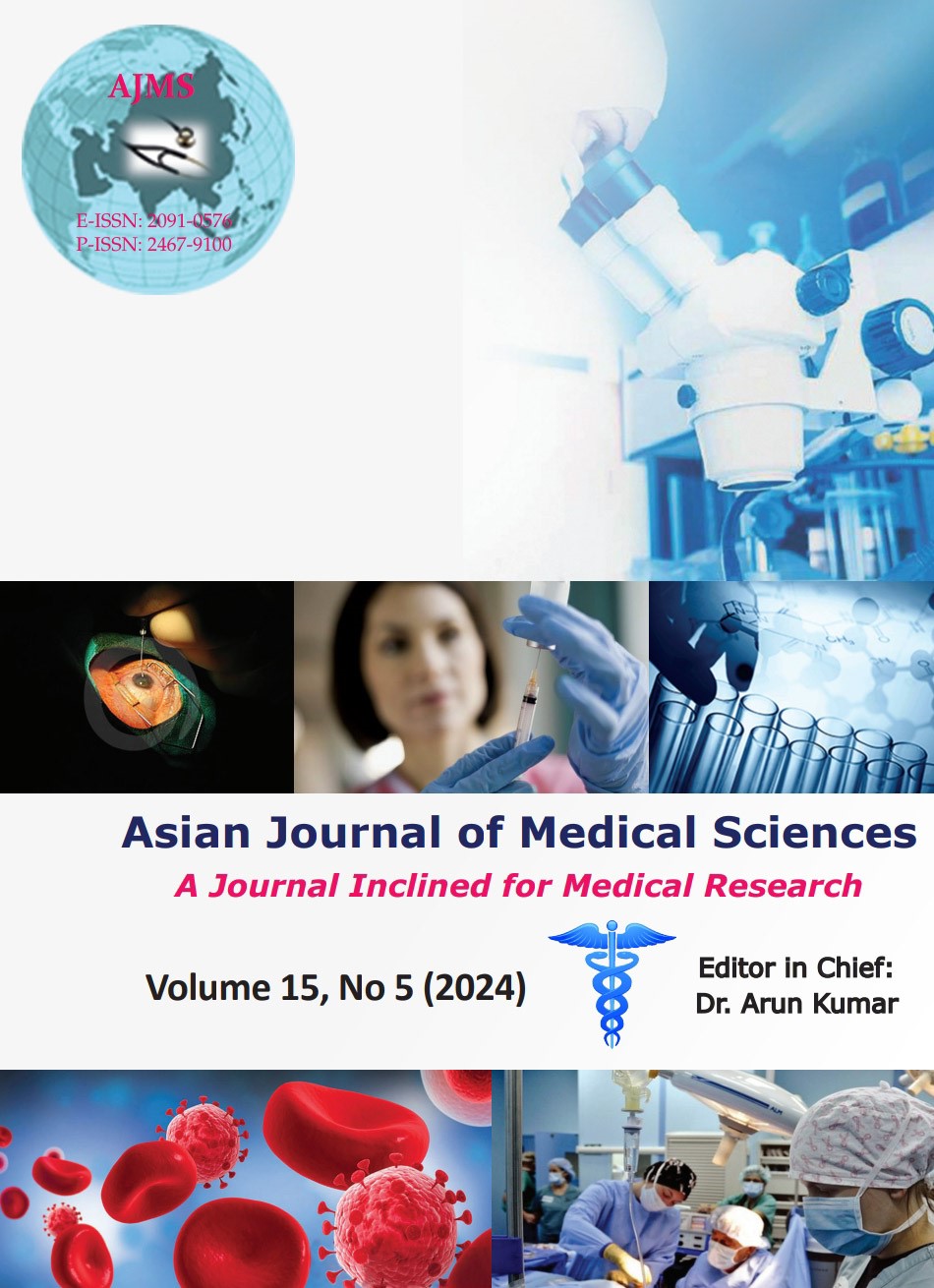Clinical profile of children with metabolic liver diseases presenting in a tertiary care hospital of Eastern India
Keywords:
Galactosemia; Jaundice; Metabolic liver disease; Wilson diseaseAbstract
Background: Metabolic liver diseases (MLDs) in children can present with a wide range of clinical features.
Aims and Objectives: This study aims to increase the high index of suspicion among physicians and awareness among caregivers regarding early diagnosis of MLD.
Materials and Methods: This hospital-based prospective observational study has been conducted in the Paediatric Outpatient Department and Inpatient Department of RG Kar Medical College, Kolkata, over 2 years from 2021 to 2023. A total of 47 children aged up to 12 years were diagnosed as various MLDs who fulfilled inclusion and exclusion criteria were included in the study. Template was generated and analysis was done on SPSS software.
Results: The study sample was 47 children with MLDs. Mean age was 4.21±3.81 years. Males: female ratio was approximately 2.35:1. History of consanguinity among parents was present in 23.40% cases which affirmed the autosomal recessive mode of inheritance in most of the MLD. History of sibling deaths was there in 10 cases. The most common symptom was yellowish discoloration 21 (44.68%) followed by abdominal distension 12 (25.53%). There were diverse modes of presentations. The most common presentations were hepatomegaly 47 (100%) and splenomegaly 30 (63.83%). Of 47 MLDs, Wilson disease cases were maximum (27.66%) followed by glycogen storage disease (23.40%).
Conclusion: High index of suspicion should be prevalent among physicians for early diagnosis of cases to reduce disease mortality and morbidity.
Downloads
Downloads
Published
How to Cite
Issue
Section
License
Copyright (c) 2024 Asian Journal of Medical Sciences

This work is licensed under a Creative Commons Attribution-NonCommercial 4.0 International License.
Authors who publish with this journal agree to the following terms:
- The journal holds copyright and publishes the work under a Creative Commons CC-BY-NC license that permits use, distribution and reprduction in any medium, provided the original work is properly cited and is not used for commercial purposes. The journal should be recognised as the original publisher of this work.
- Authors are able to enter into separate, additional contractual arrangements for the non-exclusive distribution of the journal's published version of the work (e.g., post it to an institutional repository or publish it in a book), with an acknowledgement of its initial publication in this journal.
- Authors are permitted and encouraged to post their work online (e.g., in institutional repositories or on their website) prior to and during the submission process, as it can lead to productive exchanges, as well as earlier and greater citation of published work (See The Effect of Open Access).




